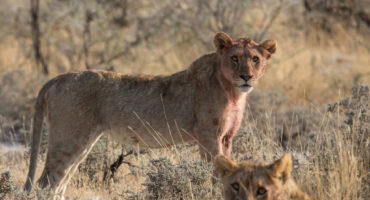Wildlife and Community-Focused Conservation in Namibia
Conservation in Namibia is more than protecting endangered species, it's a holistic model that intertwines wildlife recovery with empowering communities and preserving culture. As one of Africa’s leading conservation success stories, Namibia demonstrates how safeguarding nature can also uplift people, build economic opportunity, and celebrate heritage. At Next Adventure, we champion these integrated efforts, offering journeys that make a difference.
How Capacity Building Supports Long-Term Community Resilience
At the heart of Namibia’s conservation model is capacity building—equipping local communities with the knowledge, skills, and tools to manage their own natural resources. This approach shifts the focus from dependency to empowerment. In communal conservancies, locals are trained in wildlife monitoring, eco-tourism operations, and land management, giving them both ownership and a sustainable income stream.
The result? Over 80 conservancies now cover nearly 20% of Namibia’s land, and countless communities are better positioned to respond to environmental and economic challenges. These programs not only support ecological outcomes but also build resilience against climate and economic pressures, ensuring that conservation in Namibia is sustainable and inclusive.
How Wildlife Recovery Efforts Help Restore Natural Ecosystems
Once decimated by poaching and land degradation, Namibia’s wildlife has seen a remarkable resurgence thanks to community-based conservation. Wildlife recovery initiatives have brought species like black rhino, cheetah, and desert-adapted elephants back from the brink.
This restoration of natural ecosystems allows flora and fauna to thrive and rebalances food chains critical to biodiversity. For travelers, it means unforgettable moments like witnessing lions prowling the arid plains or rhinos grazing freely in their ancestral home. But for local communities, it means something more: the renewal of natural heritage that can be stewarded for future generations.
Socio-Economic Benefits Driven by Conservation Travel
Conservation in Namibia isn’t just about protecting wildlife; it’s a powerful engine of socio-economic benefits. Through eco-tourism, rural communities are generating income, jobs, and educational opportunities. Lodges and camps operated in partnership with local conservancies provide employment, while cultural experiences allow travelers to engage meaningfully with their hosts.
The Conservation Travel Foundation, for example, works to reinvest tourism revenue into healthcare, infrastructure, and education. This creates a sustainable cycle where conservation funds development and development fuels deeper support for conservation, a virtuous circle that benefits all.
Cultural Benefits Strengthen Local Identity and Heritage
Namibia’s conservation model also places strong emphasis on cultural benefits. By integrating traditional knowledge into conservation practices, communities preserve not only wildlife but their own histories and identities. Elders share indigenous tracking methods, oral traditions, and rituals tied to the land, keeping culture alive and valued.
Cultural tourism initiatives further support this by offering travelers a chance to learn from different Namibian groups, whether it's a San bushman walk or a Himba homestead visit, while providing locals with income and pride in their heritage.
Conservation in Namibia is a model of success because it works for both people and planet. At Next Adventure, we partner with conservancies, community leaders, and the Conservation Travel Foundation to offer safaris that contribute to this remarkable journey.
Ready to craft a bespoke experience that not only reveals Namibia’s wild beauty but helps protect it for generations to come?





